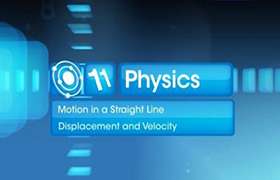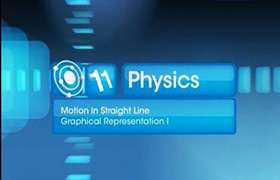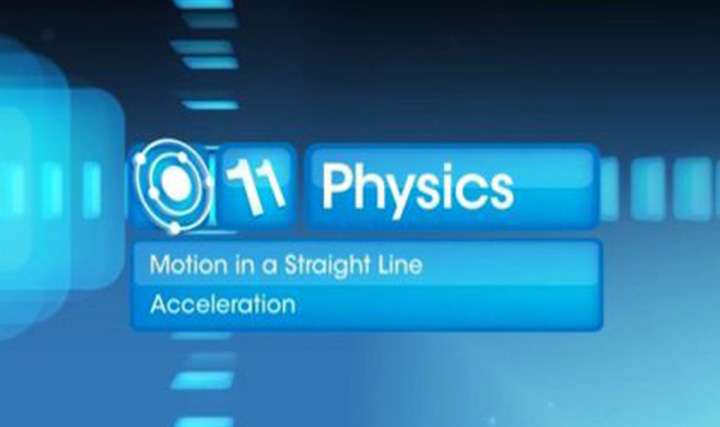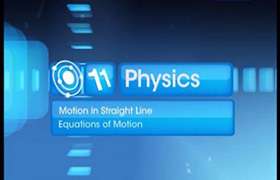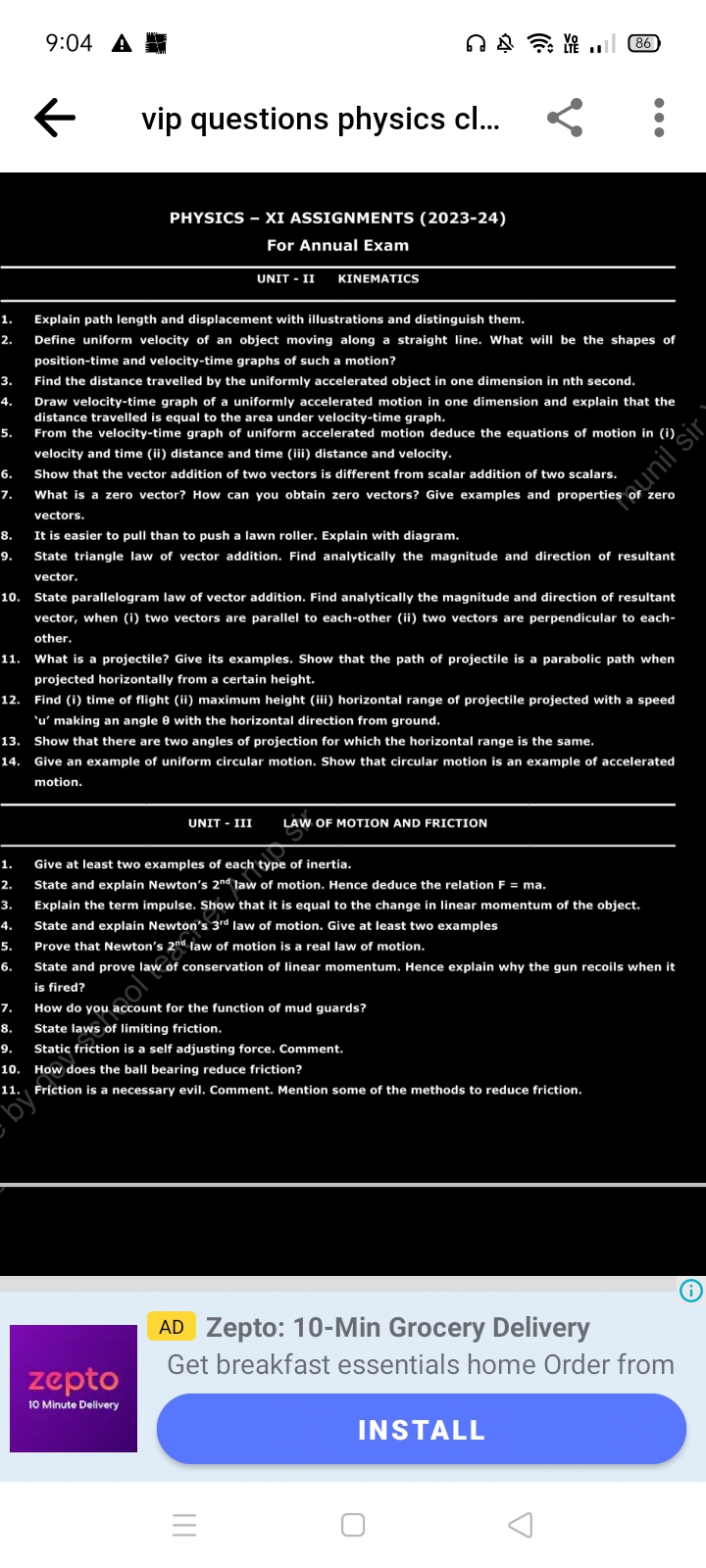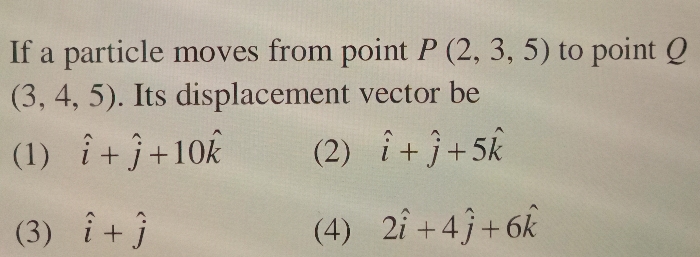CBSE Class 11-science Answered
The velocity of a body moving along x-axis is given by v="under root"36+2x where v is in m/s and x is in metre.Find the distance travelled by it in 2nd second
Asked by Shubhankar | 25 May, 2012, 05:32: PM
Given: ? V = ?[36 + 2x]
? (V^2) = 36 + 2x
? d(V^2) / dt = d(36 + 2x) / dt
Here, I am differentiating LHS and RHS separately:
LHS
= d(V^2) / dt
= [d(V^2) / dV] * [dV / dx] * [dx / dt]
= 2V * [V (dV / dx)]
= 2V * A
RHS
= d(36 + 2x) / dt
= [d(36) / dt ] + [d(2x) / dt]
= 0 + 2[dx / dt]
= 2V
Thus
? d(V^2) / dt = d(36 + 2x) / dt
? 2V * A = 2V
? A = 1
Now, if we integrate acceleration to get velocity as a finction of displacement, we get:
? (V^2) / 2 = x + C [ where C is constant of integration ]
? (V^2) = 2x + 2C
But, it was given that (V^2) = 2x + 36
? C = 18
Hence, at x=0, V = 6 or V(x = 0) = 6
Let us consider the point where the particle started motion to be the origin.
? at t=0, x=0 or x(t=0) = 0
? at t=0, V=6 or V(t=0) = 6
We had:
A = 1
If we integrate acceleration to get velocity as a function of time, we get
? V = t + C [where C is the integration constant]
As V(t=0) = 6, we get C = 6
? V = 6 + t
Now if we integrate velocity to get displacement as a function of time, we get:
? x = 6t + [(t^2) / 2] + C
As x(t=0) = 0, we get C = 0
? x = 6t + [(t^2) / 2]
Now for t = 2
x(2) = 14
For t = 1
x(1) = 6.5
Hence, distance travelled in the 2nd second = x(2) - x(1) = 7.5
? (V^2) = 36 + 2x
? d(V^2) / dt = d(36 + 2x) / dt
Here, I am differentiating LHS and RHS separately:
LHS
= d(V^2) / dt
= [d(V^2) / dV] * [dV / dx] * [dx / dt]
= 2V * [V (dV / dx)]
= 2V * A
RHS
= d(36 + 2x) / dt
= [d(36) / dt ] + [d(2x) / dt]
= 0 + 2[dx / dt]
= 2V
Thus
? d(V^2) / dt = d(36 + 2x) / dt
? 2V * A = 2V
? A = 1
Now, if we integrate acceleration to get velocity as a finction of displacement, we get:
? (V^2) / 2 = x + C [ where C is constant of integration ]
? (V^2) = 2x + 2C
But, it was given that (V^2) = 2x + 36
? C = 18
Hence, at x=0, V = 6 or V(x = 0) = 6
Let us consider the point where the particle started motion to be the origin.
? at t=0, x=0 or x(t=0) = 0
? at t=0, V=6 or V(t=0) = 6
We had:
A = 1
If we integrate acceleration to get velocity as a function of time, we get
? V = t + C [where C is the integration constant]
As V(t=0) = 6, we get C = 6
? V = 6 + t
Now if we integrate velocity to get displacement as a function of time, we get:
? x = 6t + [(t^2) / 2] + C
As x(t=0) = 0, we get C = 0
? x = 6t + [(t^2) / 2]
Now for t = 2
x(2) = 14
For t = 1
x(1) = 6.5
Hence, distance travelled in the 2nd second = x(2) - x(1) = 7.5
Answered by | 31 May, 2012, 10:57: AM
Concept Videos
CBSE 11-science - Physics
Asked by om636694 | 04 Mar, 2024, 09:10: PM
CBSE 11-science - Physics
Asked by dhanapolla | 28 Jan, 2024, 10:40: AM
CBSE 11-science - Physics
Asked by santoshyadav6673633 | 26 Jan, 2024, 04:55: PM
CBSE 11-science - Physics
Asked by manjusrihalder395 | 07 Jan, 2024, 09:55: PM
CBSE 11-science - Physics
Asked by rahmanshah8572 | 29 Dec, 2023, 08:41: PM
CBSE 11-science - Physics
Asked by klvnsnthl | 25 Dec, 2023, 07:50: PM
CBSE 11-science - Physics
Asked by pothulasubbarayudu | 25 Dec, 2023, 06:58: PM
CBSE 11-science - Physics
Asked by neerajchaurasiya651 | 10 Dec, 2023, 09:32: PM
CBSE 11-science - Physics
Asked by debasishbarik2006 | 17 Nov, 2023, 07:03: PM

